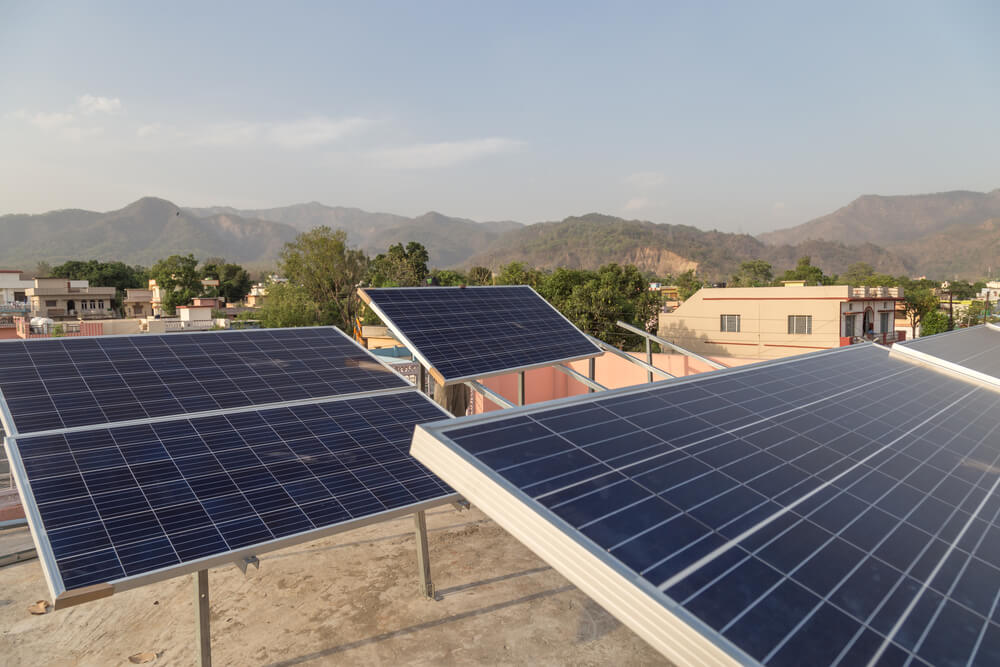ImpactAlpha, March 6 – India is fast becoming the focus of efforts to super-charge climate funding into the Global South.
Under Prime Minister Narendra Modi, India has emerged as a global leader in pushing clean energy as an economic development program and international diplomatic tool, even as his human rights abuses and authoritarian turn raise alarms. India heads the Group of 20 nations this year and an Indian-born American looks set to take leadership of the World Bank.
India is set to surpass China as the world’s most populous country this year, and become the world’s third-largest economy by the end of the decade. The country is just as critical to the global climate challenge. Its greenhouse gas emissions, already the world’s third-highest on an annual basis, are rising rapidly as the country’s fossil-fuel dependent economy picks up pace.
At the same time, the country has doubled energy consumption over the past two decades and will need to at least double it again in the coming decades to alleviate poverty and raise living standards.
To meet both the development challenge and its goal of net zero emissions by 2070, India needs as much as $10 trillion of investment. Because of its sheer size and thorny challenges, the solutions and models developed there will shape the paths of developing regions such as Africa and Southeast Asia.
The country’s green energy potential is “no less than any gold mine or oil field,” Modi said recently. “I invite every stakeholder in the energy world to invest in India.”
Just transition
Foreign investors are trying to massively scale up investment in India’s net-zero transition.
The trick is to do it in a way that is socially inclusive and doesn’t leave workers or communities behind. This will most likely happen alongside revamped multilateral lending institutions and philanthropic grants in “blended” financing arrangements that address social and economic challenges as well as decarbonization.
The country has formed a Task Force on Sustainable Finance anchored by its securities commission and other relevant ministries to hammer out a framework for climate investment, including reporting requirements for business. This year, India’s largest corporations will have to file business responsibility and sustainability reports for the first time. The country’s central bank has begun to study the impact of climate risk and sustainable investments on the financial system.
The London School of Economics’ Grantham Research Institute on Climate Change and the Environment and British International Investment, the U.K.’s development finance institution, issued a set of recommendations along these lines last week. They include deploying corporate philanthropic funds in India for job retraining and encouraging companies to incorporate social factors in their own net zero plans and disclosures.
The recommendations build on calls at COP27 last year for a broader reform of investment and lending practices to better target net zero and social development goals, said the Grantham institute’s Nick Robins, an author of the Just Finance India report.
Government leaders at the climate conference “highlighted the need for the transformation of the financial system to mobilize capital for net zero, particularly for developing and emerging economies like India,” Robins said in a virtual forum launching the report.
Of the $10 trillion needed for India’s net-zero transition, only $6.5 trillion can likely be met by conventional sources of funding, according to the Council on Energy, Environment and Water (CEEW), a New Delhi-based think tank and research outfit. Another $3.5 trillion will need to come from innovative financing mechanisms, including $1.4 trillion from outside the country, the group said.
Green development
Modi played an important and unexpected role in helping seal the 2015 Paris Agreement. The country has introduced policies to subsidize the production of solar panels and green hydrogen. Modi plans to make climate financing a major initiative for the G-20, a forum that’s increasingly being used to bridge developed and developing world concerns.
Meanwhile, a push to overhaul one of the biggest pillars of global development finance – multilateral development banks, particularly the World Bank group of lenders – received a major boost recently when World Bank head David Malpass agreed to step down a year before his term ends. Malpass, a Trump administration appointee, capped a tenure replete with criticism over the slow pace at which the bank is moving to address climate issues and a public relations disaster last year when he refused to acknowledge that climate change is caused by man-made emissions.
The Biden administration has nominated Ajay Banga for the position. Banga, a naturalized American citizen who was born and raised in India, is vice chairman at General Atlantic and a former head of Mastercard. He is also chairman of the public-private Partnership for Central America with Kamala Harris.
If he lacks direct climate expertise, Banga’s wide-ranging network could help him assemble an effective team.
Banga will need to be approved by the World Bank’s governing board next month, which traditionally has backed U.S. choices for World Bank leadership (Europe typically picks the leadership of the other major post-World War II multilateral lender, the International Monetary Fund).
The Biden administration believes Banga could be a catalyst for radically boosting the amount and type of lending that multilateral development banks provide to address climate change and fund a massive decarbonization of the world economy. Calls for reforms to the multilateral banks – including far more funding that is better aligned with the goals of the Paris agreement – reached a crescendo at the COP27 climate summit in Sharm El Sheikh, Egypt last year.
Barbados Prime Minister Mia Mottley has led the charge with what’s become known as the Bridgetown Initiative, a collection of recommendations for the multilateral banks to drive more private lending by boosting their capital and leveraging it further with loan guarantees and other ways to encourage private investment. Under the leadership of Indonesia last year, the G-20 conducted an in-depth study looking at ways to do that, an initiative India has picked up on.
India itself is an important focal point for all of these efforts. It has a massive decarbonization challenge ahead – more than two-thirds of its electricity comes from coal-fired plants and it is heavily dependent on imported oil. It desperately needs to generate jobs and raise living standards by growing the economy.
At the same time, the country has a well-developed domestic financial system and attractiveness for a wide variety of overseas investors. If there’s a developing country where the strands of increasing climate finance and economic development can potentially be woven together with a new approach, India might be it.
Climate and development
The complexity of India’s challenges are stark.
To note just one example, the national railroad, Indian Railways, is held up by the government as a standout in the country’s decarbonization efforts. And in some sense it is. The railway, which is the country’s largest employer and single biggest electricity consumer, has steadily electrified virtually its entire network, completing the job last year. That saved the country a massive volume of diesel fuel imports when global prices spiked after the Russian invasion of Ukraine.
But it also created a new source of demand for electricity during a heat wave last summer that pushed the use of coal to record levels and bumped up carbon emissions from electricity production. India has been adding renewable energy at a rapid clip, but not fast enough to meet growing demand, much less to begin to push coal out of the system.
And even when coal use begins to fall – still a few years away by most estimates – that will create new challenges for the railway. Coal is the single largest and most profitable class of rail freight, and those revenues are used to subsidize passenger fares, keeping them low enough to be affordable for working commuters and migrant laborers alike. A hike in fares for the 20 million daily riders or a broad reduction of the railway’s 1.5 million workforce would be economically disruptive and politically difficult.
Meanwhile, the railway will spend more to fortify its tracks, bridges and stations against the increased flooding, higher temperatures and stronger storms that climate change will bring. India is considered among the most vulnerable nations to climate change.
India faces innumerable climate versus development conundrums like this, macro and micro. Most lending in the country goes to large-scale companies, while the vast majority of jobs, and on-the-job skill training, are provided by small and medium sized businesses.
Regional dynamics
Renewable energy is sprouting up mostly in the economically dynamic northwest and south of the country, along with the accompanying jobs, while the eventual wind-down of coal will hit much poorer coal-mining states in the east, where those jobs are most needed.
Navigating through these and other dilemmas like them will be par for the climate challenge course in developing countries around the world in the coming decades. To the extent India finds solutions, they could be applied, with local modifications, everywhere from Indonesia to Africa.
India has begun to gird itself for these challenges, though often haltingly. The government recently unveiled an annual budget that promises $4.3 billion in investment towards “net zero, energy transition and energy security objectives.” But it remains unclear how much of that will go into the first two categories. And the amount apportioned to the third objective could well include fossil fuel subsidies to prevent price rises for consumers.
The country’s negotiations with developed countries in the G-7 over funding for its energy transition have faltered due to India’s refusal to commit to a goal for phasing out coal. Three other JETP, or Just Energy Transition Partnerships, with South Africa, Indonesia and Vietnam have made a pivot away from coal central to financial packages of $8.5 billion, $20 billion and $15.5 billion respectively.
India has said coal use will likely peak by 2035, but that it needs the flexibility to continue its use until renewables offer a fully secure supply. It wants a JET-P deal that focuses solely on financing renewable energy, without restrictions on coal.
The issue underscores how even as India finds itself at the center of the global just transition debate, the realities on the ground will present challenges to a smooth path forward.











